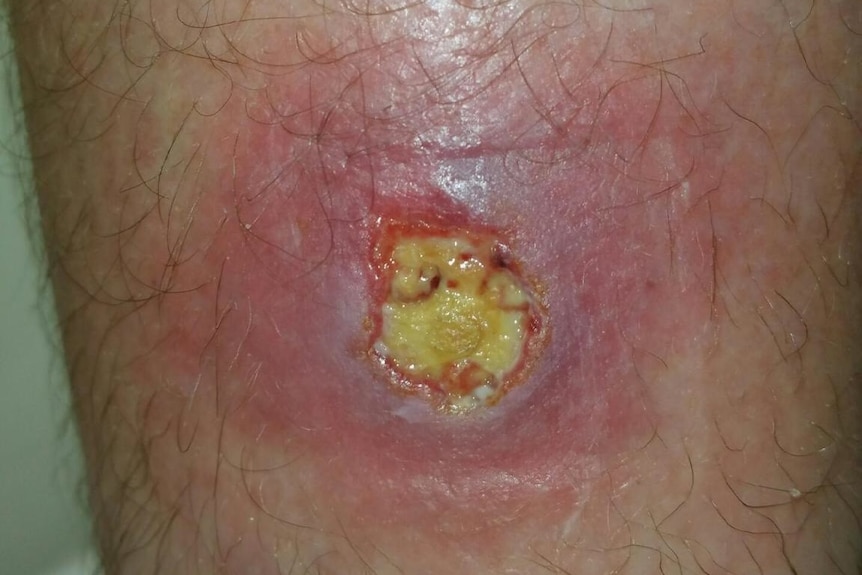Infection
Flesh-eating ulcer reported as locally acquired in New South Wales for the first time
Authorities have today reported the first locally-acquired case in New South Wales of a flesh eating ulcer.
Warning: This story contains images some readers may find distressing.
Key points:
- The Batemans Bay resident was diagnosed with the skin infection last month, and two other historical cases have since been detected
- While the infection is often reported in other states and territories, a locally acquired case has not been reported in NSW until now
- The precise transmission method is not fully understood but there is increasing evidence mosquitoes and possums play a role
The Buruli ulcer is a bacterial skin infection that is often detected in Queensland, Victoria and the Northern Territory.
In the past, it has been detected in people in NSW who have travelled to areas where the infection is known to occur.
But a resident of Batemans Bay on NSW’s South Coast was diagnosed in August without having travelled to any of those areas.
It prompted the Southern NSW Local Health District (SNSWLHD) to investigate further, and it has since found two other historical cases of the infection in the Batemans Bay area since 2021.
“We were surprised to stumble across cases in our district,” SNSWLHD Public Health acting director April Roberts-Witteveen said.
“The thing that makes these people interesting is that they had not travelled to an area where this ulcer is common, so they all were likely to have acquired their infections in their local environment on the South Coast,” she said.
“The good news is that the people from the South Coast that were affected were able to be treated. They had primary care.”
Condition is treatable
Ms Roberts-Witteveen said that while there was more to be learnt about the condition, it could be treated.
“Buruli Ulcer is caused by a bacteria, and it starts as a small, painless spot or sore on your skin, and then it can form into a larger ulcer over weeks and months,” she said.
“It’s not transmissible from human to human, as far as we know, and it can be treated with antibiotics once it’s diagnosed, and people can fully recover.”
NSW Health was investigating why the infection had appeared on the South Coast and urged people to be wary of mosquitoes.
“While the precise transmission method for Buruli ulcer is not fully understood, there is increasing evidence from other parts of Australia that mosquitoes and possums likely play a key role,” Ms Roberts-Witteveen said.
SNSWLHD asked the community to be alert to infection and try and avoid mosquito bites, but Ms Roberts-Witteveen said people did not need to be overly alarmed.
“At this stage there’s only been a couple of cases identified in all of NSW who have not travelled to higher instance areas,” she said.
“So we’re encouraging people to be aware that this condition has occurred in our area, and to know they can protect themselves by avoiding mosquito bites, and be assured that NSW Health is continuing investigations.”

